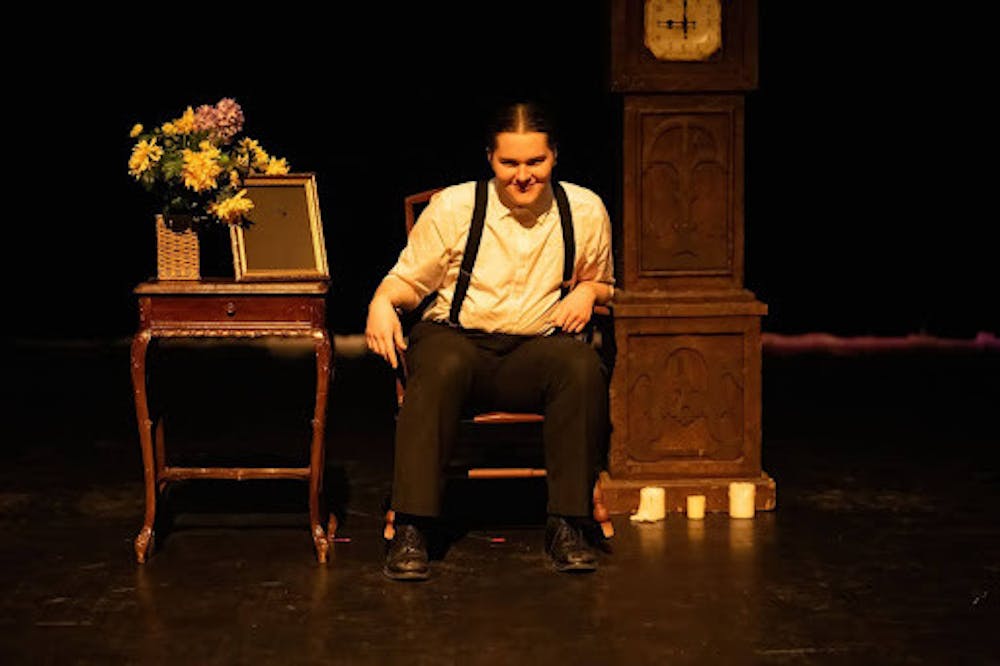You only get one first impression, and in the world of theater, making it a memorable one is a priority. A senior music theatre major, Sophia Vessecchia, did exactly that when she directed the play “Ernest and the Pale Moon” last Friday.
“Amazing,” Vessecchia responded when asked how she felt about directing the play.
“Ernest and the Pale Moon” was incredible because of both the work of the people in and around the play, and a well crafted story.
The plot follows Ernest, a paranoid and obsessive man who quietly watches the woman of his dreams. When she falls in love with another man, Ernest’s rage and paranoia spiral, leading him down a dark path filled with regret and guilt that ultimately drives him to madness. This macabre play was written by Oliver Lansley, who drew inspiration from several works, notably, Edgar Allen Poe’s short story “The Tell-Tale Heart.”
“I love all of their work,” Vessecchia said. “If I ever got a chance to direct, it would be one of theirs.”
This wish came true on the night of Feb. 14, when Vessecchia directed the play for an audience at Katherine Cornell theater. The performance succeeded thanks to the director’s excellent work and the talent of the actors. One standout feature was the use of body language to convey each character’s traits and ideals, which added depth to the play.
While all the actors did a fantastic job, one in particular commanded the most attention: Ty Burgess, who portrayed Ernest. Throughout the story, his subtle movements contrasted beautifully with his louder, more manic ones, taking great care to properly display Ernest's tumultuous mind. His voice would be able to act both polite while thinly veiling his distraught. His inhumane screams and cries were most impressive, giving the audience chills.
From Ernest’s slight twitches to Gwendolyn’s impressive dances, every minute detail felt tailored to each character. Each motion told a story not just through words, but through the eyes — a story that resonated deeply with every member of the audience.
Through the use of colors, the environment itself told a story, with dark red hues symbolizing madness and yellow lights representing love and hope. Meanwhile, the sound effects were seamlessly melded into the narrative, clarifying what was, at times, a confusing story. Simple sounds like scratching and banging worked just as effectively as the carefully timely music, all coming together to weave a tale of Ernest’s guilt, anger and his gradual descent into madness.
Audiences responded enthusiastically, showering the performance with applause. Throughout the production, they were constantly surprised by twist after twist as they learned more about Ernest discovering the true meaning of “the pale moon.”
What was most impressive about the play was that it was Vessecchia’s first time directing. With more student-led productions on the horizon from UB’s Theatre and Dance, one can only hope Vessecchia returns with another captivating show.
The arts desk can be reached at arts@ubspectrum.com





